blog
Book Review: DIG: Notes on Field and Family by Sarah Wilson
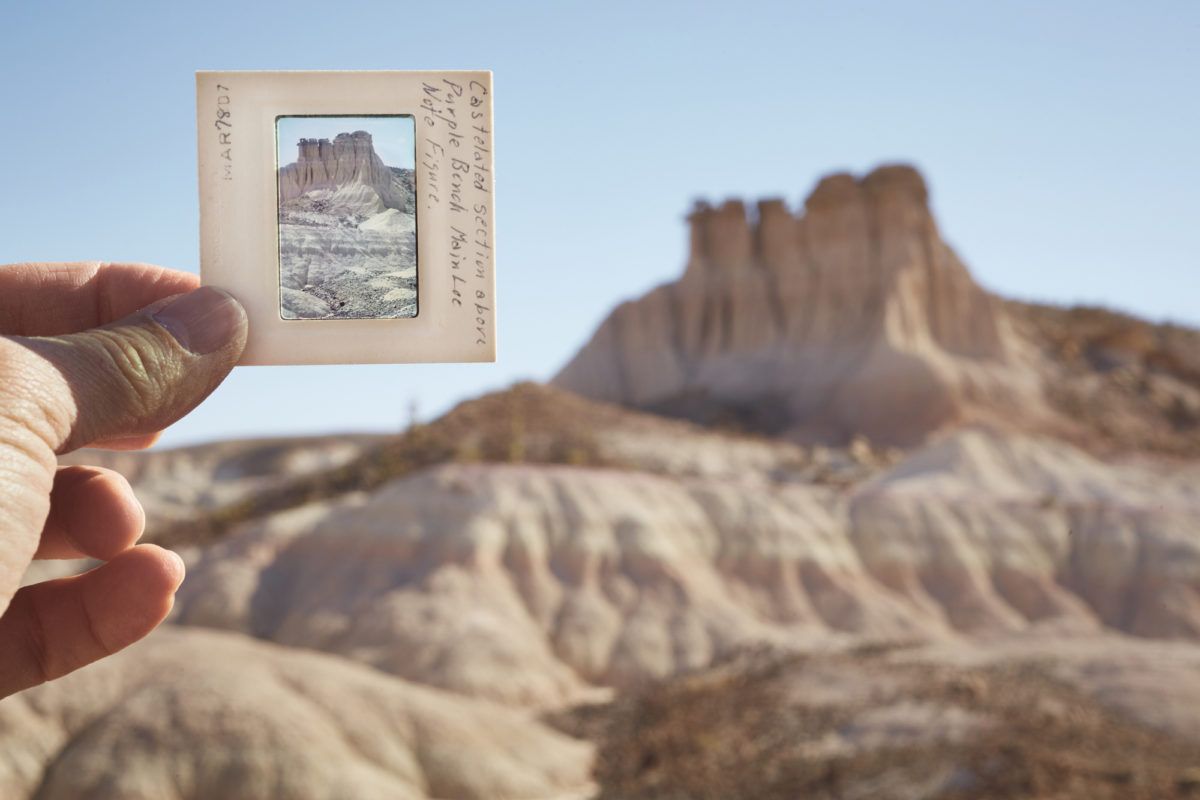
from ‘Dig: Notes on field and family’ © Sarah Wilson
Photographer Sarah Wilson’s grandfather gave her three black metal boxes filled with old Kodachrome slides before he passed away. His annual paleontology digs in West Texas and Big Bend National Park produced those images, which included geologic diagrams, rock formations, bone and skull fragments, and landscapes. When he was a professor of geology and paleontology at the University of Texas, these were his lecture slides. Wilson held the photos up to the light and discovered that despite being born fifty years apart, her grandfather and she had captured some of the same desert vistas from the same vantage points. This common bond sparked an adventure and a lengthy undertaking that were chronicled in the pages of her debut book, DIG: Notes on Field and Family.
Now every winter, Wilson goes on digs with paleontologists in the Big Bend region, looking for bones and taking pictures of the same desolate desert vistas as those old 35mm slides given to her. Her work, however, is more than just a tribute to her grandfather. It became a path for personal discovery. She has combined the personal and the scientific by producing conceptual self-portraits in the form of anatomy and geology charts. The annual excavations serve as a pilgrimage for Sarah to an origin story that goes back further than traceable generations. After getting to know the ins and outs of digging for days with little to show for it and researching and exploring her grandfather’s life work, Wilson sets out to make a documentary project, but ends up crafting a personal memoir.
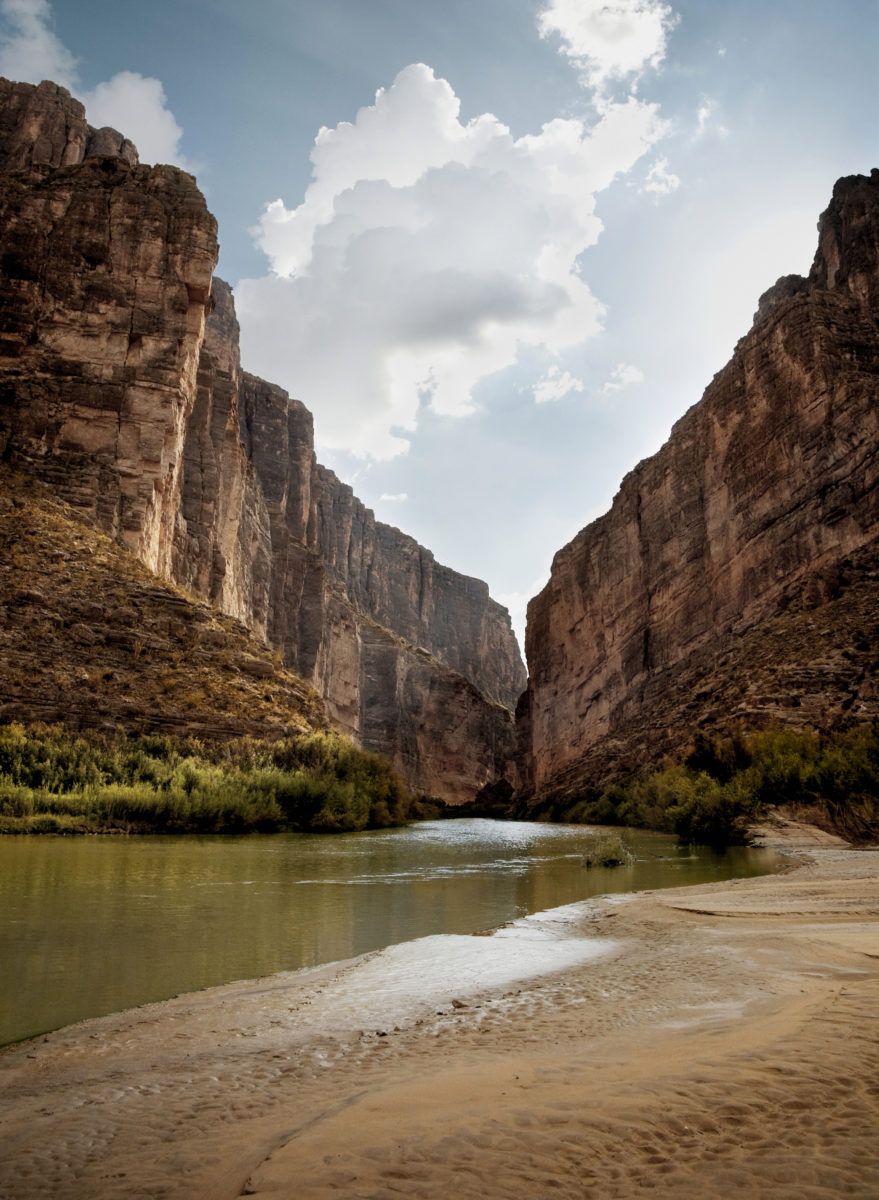
from ‘Dig: Notes on field and family’ © Sarah Wilson
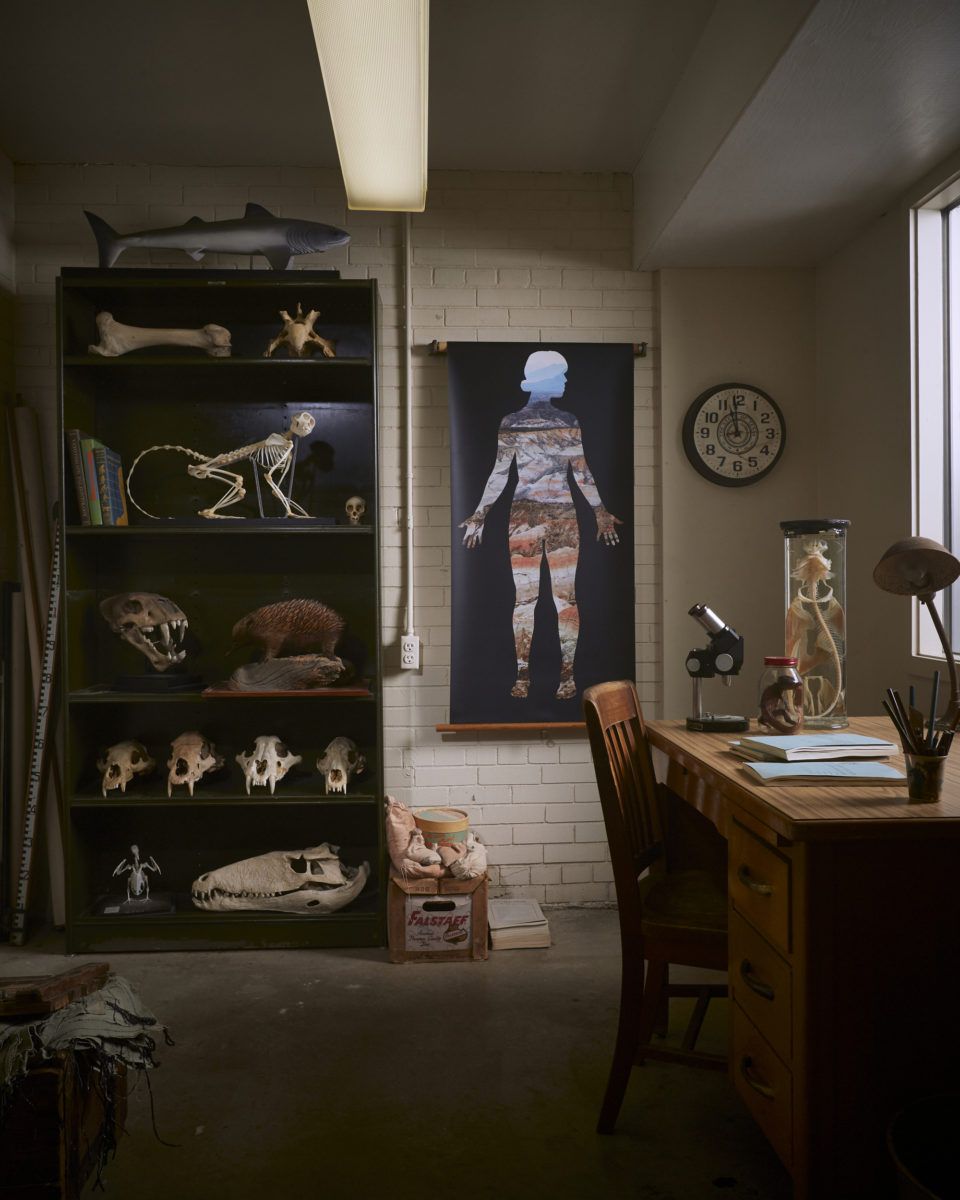
from ‘Dig: Notes on field and family’ © Sarah Wilson
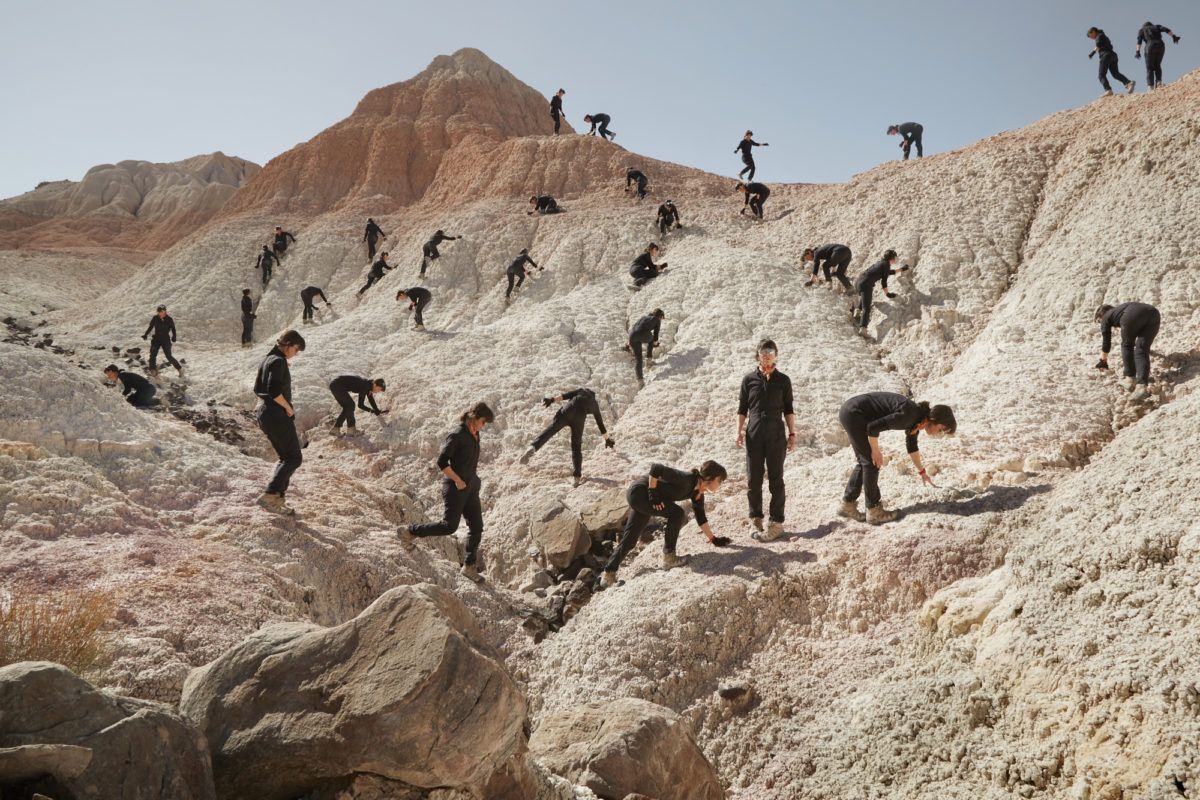
from ‘Dig: Notes on field and family’ © Sarah Wilson
Like many people, I’m tempted to skip to the end of books to see what lies ahead. Much of the time when I look through a photo book for the first time, I skip back and forth while skimming the pages. I want to get a feel for the pacing, the look of the images, the strength of the design, etc. When I sat down with Dig, I was immediately met by colorful printed front end-sheets that remind me of educational picture books from my childhood. There are bands of fantastic scenes chock full of dinosaurs and flowing volcanoes. Then three pages into the book the reader encounters a photo of a digging tool that looks like a pick axe, right before the title page. Right beneath the bold title ‘DIG’ is the subtitle; in pencil-written words, “Notes on field and family”, immediately followed by a dedication page, also written in pencil. Now I feel like I’m reading someone’s journal.
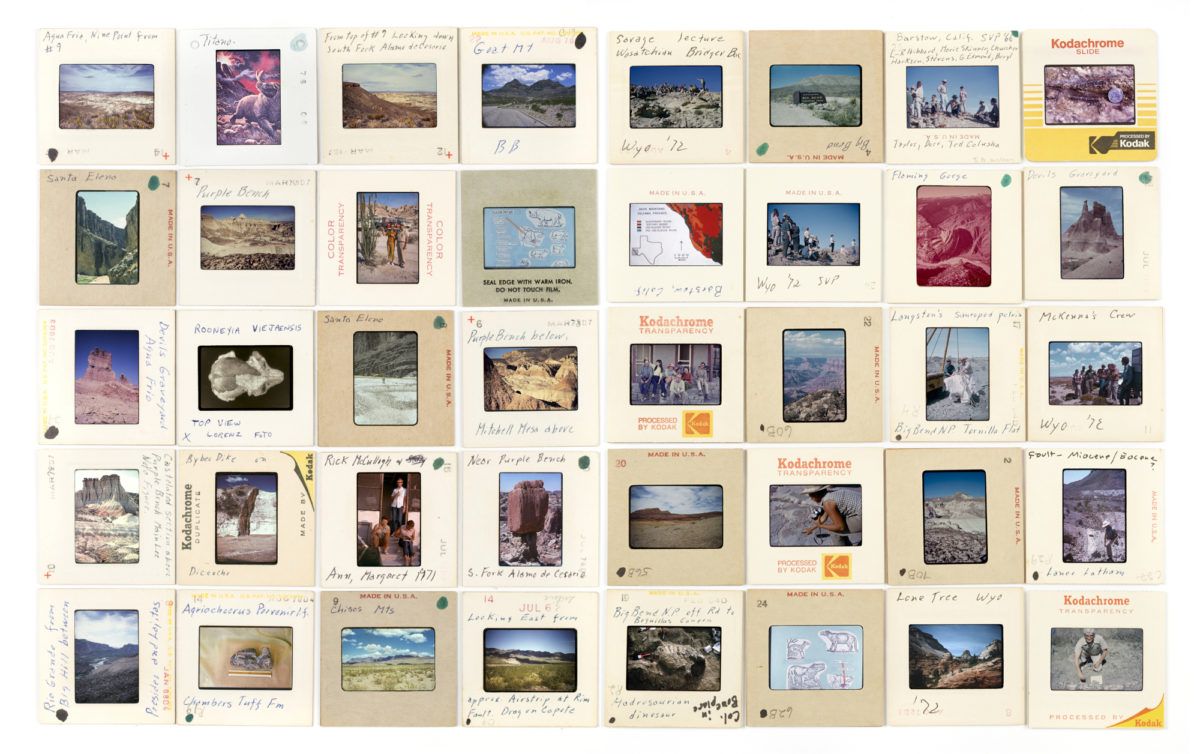
from ‘Dig: Notes on field and family’ © Sarah Wilson

from ‘Dig: Notes on field and family’ © Sarah Wilson
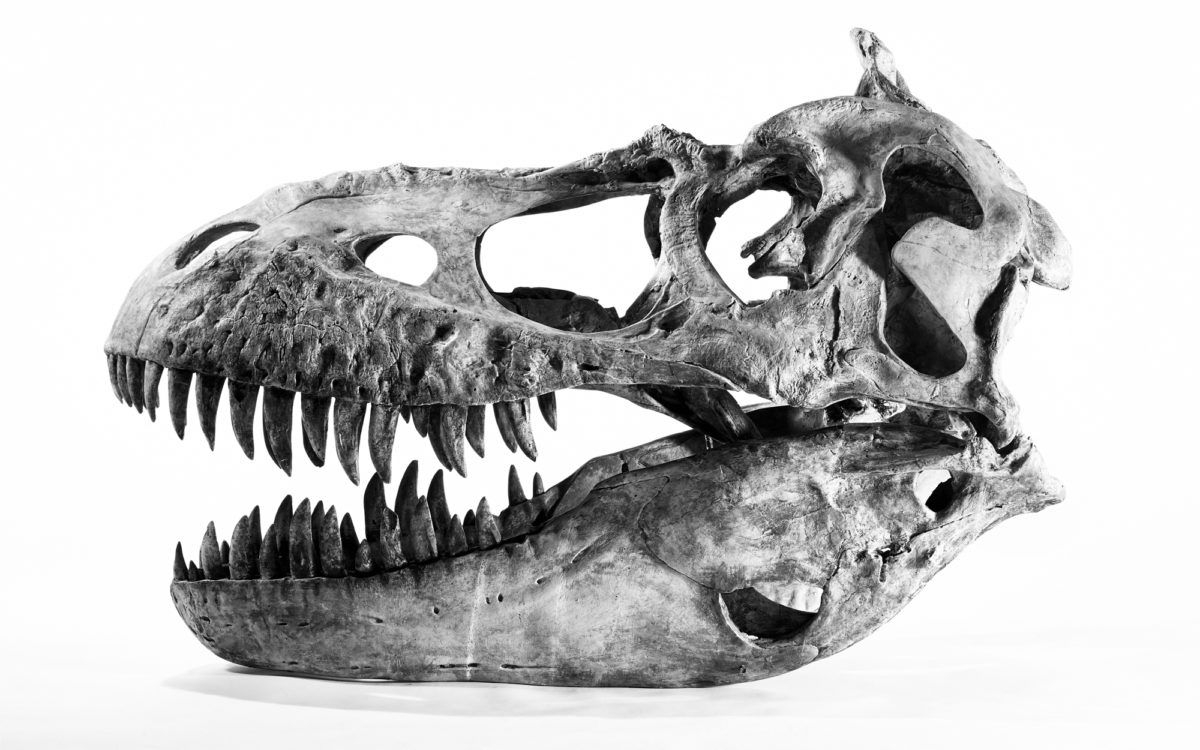
from ‘Dig: Notes on field and family’ © Sarah Wilson

from ‘Dig: Notes on field and family’ © Sarah Wilson
The feel of Wilson’s handwritten entries echo the names, locations and dates written on her grandfather’s slides reproduced in the book. Dig even includes a two-page spread which is like looking down at a light table covered in Kodachrome slides covered with hand-written notes. We also see objects Wilson documented as part of her exploration: wonderful photos like a rack that holds many ink stamps used to label paleontology or geology documents, fossilized skulls in time-worn carboard boxes with their Latin names and where they were found, field notebooks, dusty specimens, old photos of her grandfather, and a giant mastodon skull. We see comparison images using those old slides and current views which line up in Wilson’s viewfinder. And Wilson shares new work stemming from her time spent in the field – landscapes, photo montages, and visually astute self-portraits. When these items are paired up with Wilson’s text about her journey to discover more about her family, it reads like a personal history book. It is like emptying your grandparent’s hall closet and getting an in-depth story about each dusty tennis racquet, each lost mitten, the leopard patterned coat Grandma always wore to holiday gatherings. And why is there a stuffed woodpecker on the top shelf? Mysteries abound – some are solved, some never are.
One might say Wilson’s Dig is an excavation of sorts; and excavation and examination of her grandfather’s life and his career. She learned some things about him before his death, others things were left to be uncovered years later. Many similarities between Sarah and her grandfather, John A. Wilson, are discovered along her way. Both are intensely curious explorers. both documented the landscape in the Big Bend region of Texas, sometimes the exact same location separated by half a century. Those shared bonds prompt Wilson to think about what she calls Deep Time. Not mere 50 year increments – Eons. Millenniums. This aspect of her finding grand meanings in the process of literally and metaphorically sifting through one handful of dirt at a time is precious and endearing.

“When I think too long about Deep Time, I lose my footing. It’s hard enough to envision my immediate family tree, much less the billions of years and millions of species that came before us. I worry about our world and what it will look like eons from now—could we be coming upon an extinction moment of our own making?
Paleontologists see the dirt as a timeline. Will our line in the dirt be dark and ashen?”
– Sarah Wilson
I read straight from cover to cover in one sitting; reading the text and soaking up the images like one would read a story book. I love the handwritten entries in pencil throughout the book. The tactile, almost visceral feel of graphite mark-making strengthens the diaristic feel of Wilson’s shared thought and experiences. The entries are direct, semi-permanent – much like ourselves and the evidence of our lives we trace on the things we leave behind. From all our years gone by. Maybe some of those marks will last long enough to be found by others who will treasure the findings, no matter how small.
::
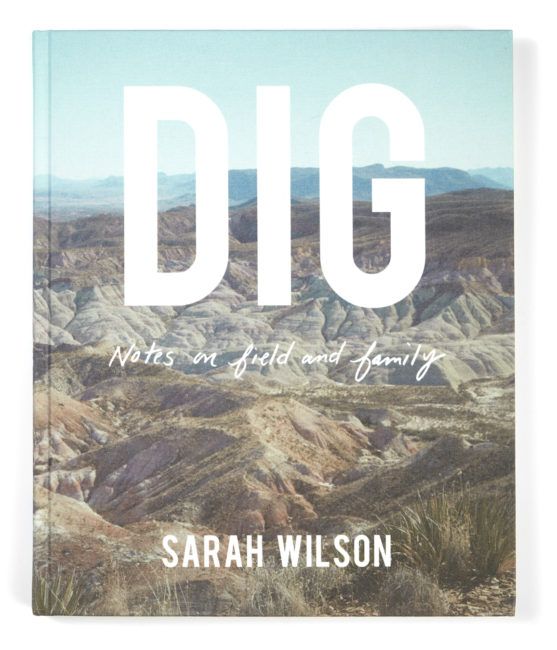
Dig: Notes on Field and Family by Sarah Wilson
Second edition, Released April 2023
Photographs by Sarah Wilson Essay by Matthew A. Brown
Hardcover, 11.25 x 9.25 inches 128 pages
Second Edition of 350
Published by Yoffy Press
::
Sarah Wilson is an Austin-based cinematographer and photographer working for magazines such as The New York Times Sunday Magazine, Time, The Atlantic Monthly, Texas Monthly, Mother Jones, and others. She is also the co-founder of Go-Valley, an Austin-based production company.
Wilson is a graduate of NYU’s Tisch School of the Arts. She balances documentary films and editorial photography assignments with personal and public art projects. Wilson’s portrait series about an East Texas town in the aftermath of a hate crime, titled Jasper, Texas: The Healing of a Community in Crisis, received multiple grants, toured seven cities in Texas, and showed at the White Box Gallery in New York City. With Blind Prom, Wilson volunteered as the prom night photographer at the Texas School for the Blind for ten years. Blind Prom was awarded the PhotoNOLA Review Prize, and showed at New York’s Foley Gallery, the New Orleans Photo Alliance Gallery and at China’s Lishui Photography Festival. Her work has been acquired by the permanent collections at the Museum of Fine Arts Houston, the Harry Ransom Center at the University of Texas, and the Lishui Photography Museum of China. Alongside her husband, director Keith Maitland, Wilson worked as Director of Photography and Executive Producer on the film, TOWER, awarded Best Historical Documentary Emmy in 2018.
Location: Online Type: Book Review
Events by Location
Post Categories
Tags
- Abstract
- Alternative process
- Architecture
- Artist Talk
- artistic residency
- Biennial
- Black and White
- Book Fair
- Car culture
- Charity
- Childhood
- Children
- Cities
- Collaboration
- Community
- Cyanotype
- Documentary
- Environment
- Event
- Exhibition
- Faith
- Family
- Fashion
- Festival
- Film Review
- Food
- Friendship
- FStop20th
- Gender
- Gun Culture
- Habitat
- Hom
- home
- journal
- Landscapes
- Lecture
- Love
- Masculinity
- Mental Health
- Migration
- Museums
- Music
- Nature
- Night
- nuclear
- p
- photographic residency
- Photomontage
- Plants
- Podcast
- Portraits
- Prairies
- Religion
- River
- Still Life
- Street Photography
- Tourism
- UFO
- Water
- Zine

Leave a Reply